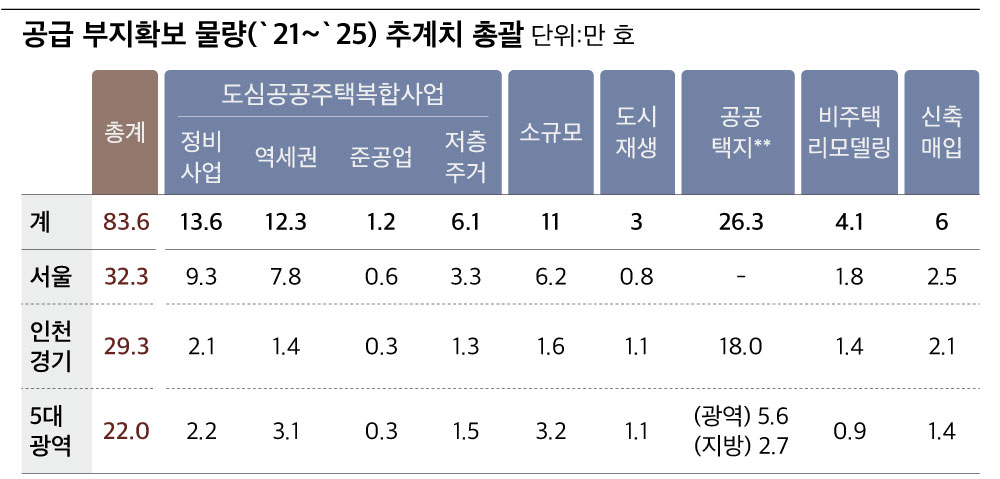Input 2021.02.08 06:06
The overwhelming number of’plans for remarkable expansion of public-led metropolitan housing supply (2∙4 countermeasures)’, announced on the 4th, first attracts attention. If the existing supply plan of 1.27 million households in the metropolitan area and other supply measures are added, it is 2.05 million households. It is a’highest level’ than the time of the Roh Tae-woo administration, which often becomes a’best example’ of collecting house prices by constructing two million homes.
As promised, will the supply of 830,000 households over the next four years become a reality before our eyes? How far is the truth about 830,000 households?
In fact, the amount of supplies that can guarantee supply expansion according to the government’s will in this second and fourth measures is only about 320,000 households (①), including 263,000 houses supplied through new public housing sites and 60,000 households through new construction purchases.
The maintenance projects, which the government has set as a big framework for supply expansion, high-density development in the station area, semi-industrial areas and small-scale maintenance projects, and urban regeneration maintenance projects, are also projects that have already been promoted through the private sector. This means that it is not the first means of supply to be introduced.
The remaining 513,000 households were 836,000 households minus 323,000 households that could be handled in a pure public role. The government put public-led supply plans into the 2∙4 measures and suggested incentives such as increasing the floor area ratio and easing building regulations. Experts estimate that the supply volume will increase by about 30% compared to the existing plan if institutional benefits are received when led by the public. To that extent, the actual increase in supply due to public-led incentives is only about 110,000 households (②).
The amount of supply that the government can actually increase is at most 430,000 households (①+②). Even if the remaining 400,000 households are left alone, they are the quantity to be released someday. Of course, this figure is also possible when private participation in public-led maintenance projects follows the government’s will, and the actual supply effect may be worse than this.

The focus of this supply plan is that the public is leading. The problem is that the supply plan was inflated by placing a spoon called’public initiative’ on the plate of housing supply already being made in the private sector. It is basically the area of private supply, except for supply through public housing and supply of purchased housing among the government plans, and the public is trying to turn it to government supply with institutional support and deregulation.
For example, consider a public-led maintenance project to supply 136,000 households. The reconstruction and redevelopment projects already under way are being led by the private sector. Although there is a public reconstruction that was proposed before this countermeasure, the project promotion is sluggish due to the small number of applicants.
The government explained that the amount was conservatively calculated in consideration of the ratio of existing projects while deciding the supply plan for public maintenance projects, but this is only the government’s expectations. Whether or not to take a publicly-led business approach is entirely up to the members. This is not an area that the government would say like this or that. Assuming that all of them are promoted as private maintenance projects according to the decision of the maintenance project entity (members of unions, owners of land, etc.), the supply plan for 136,000 households will be zero.
Professor Shim Gyo-eon of Konkuk University’s Department of Real Estate said, “Most of the announced supply plans are already being done by the private sector, but if this is promoted as a public project, more projects can be built with incentives. “I’ve got it.”
Professor Shim said, “In this measure, there is virtually no way to increase the supply of housing led by the government except through new public housing. The amount of supply increased by the incentives promised during public projects is about 30% higher than when it was promoted by the private sector. It will stop,” he added.
